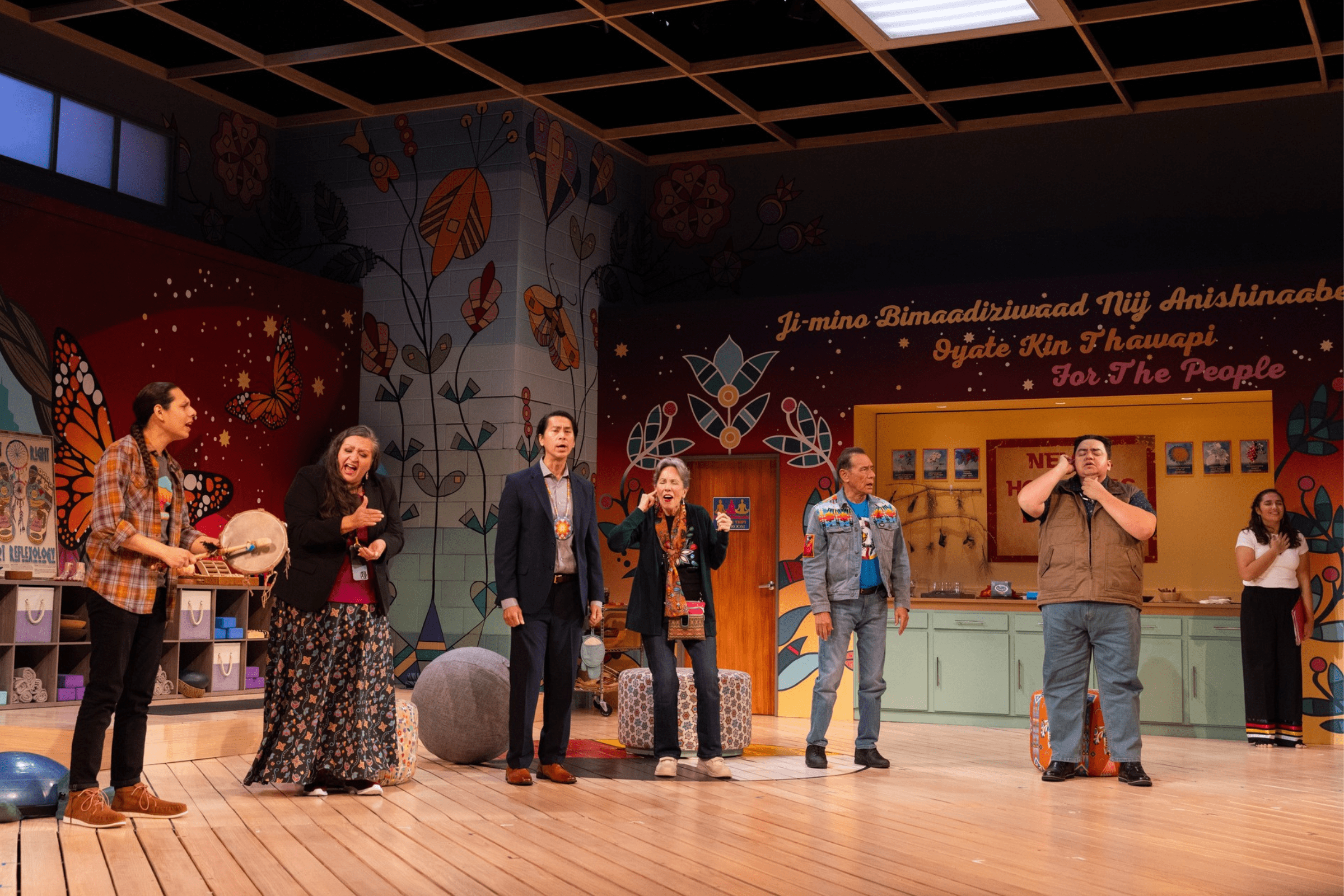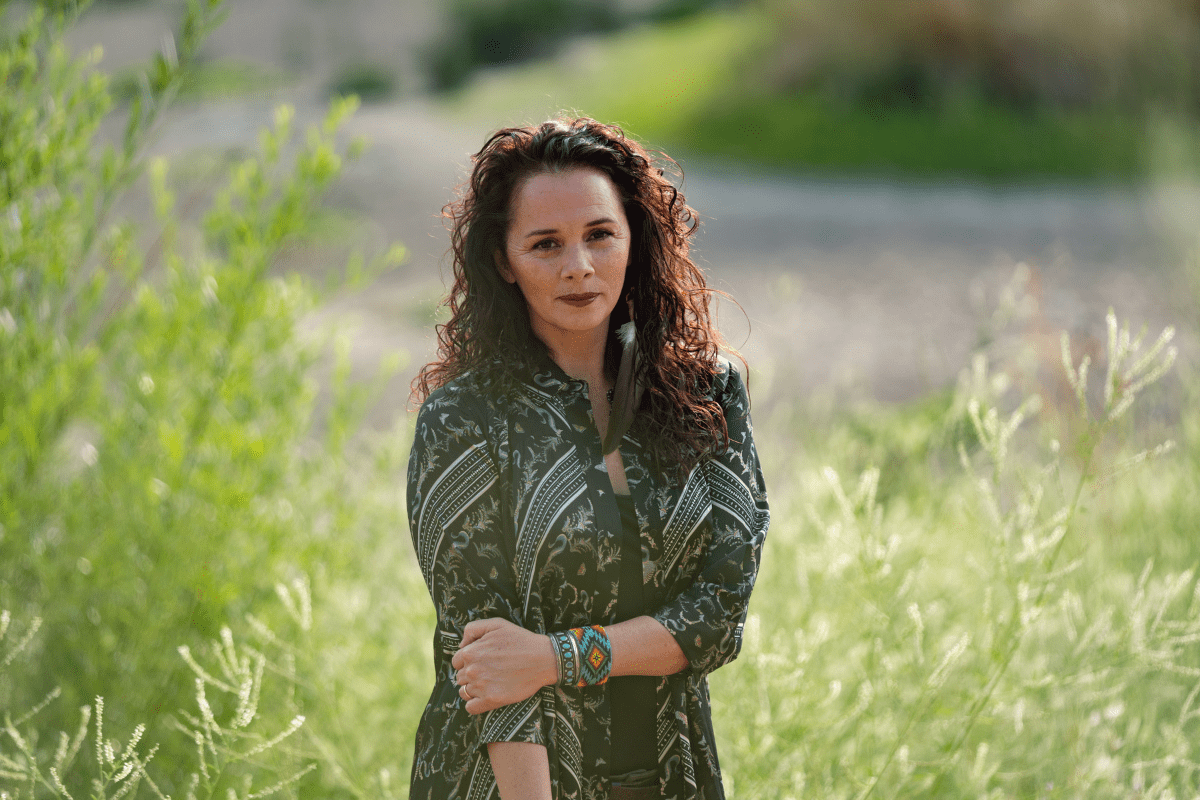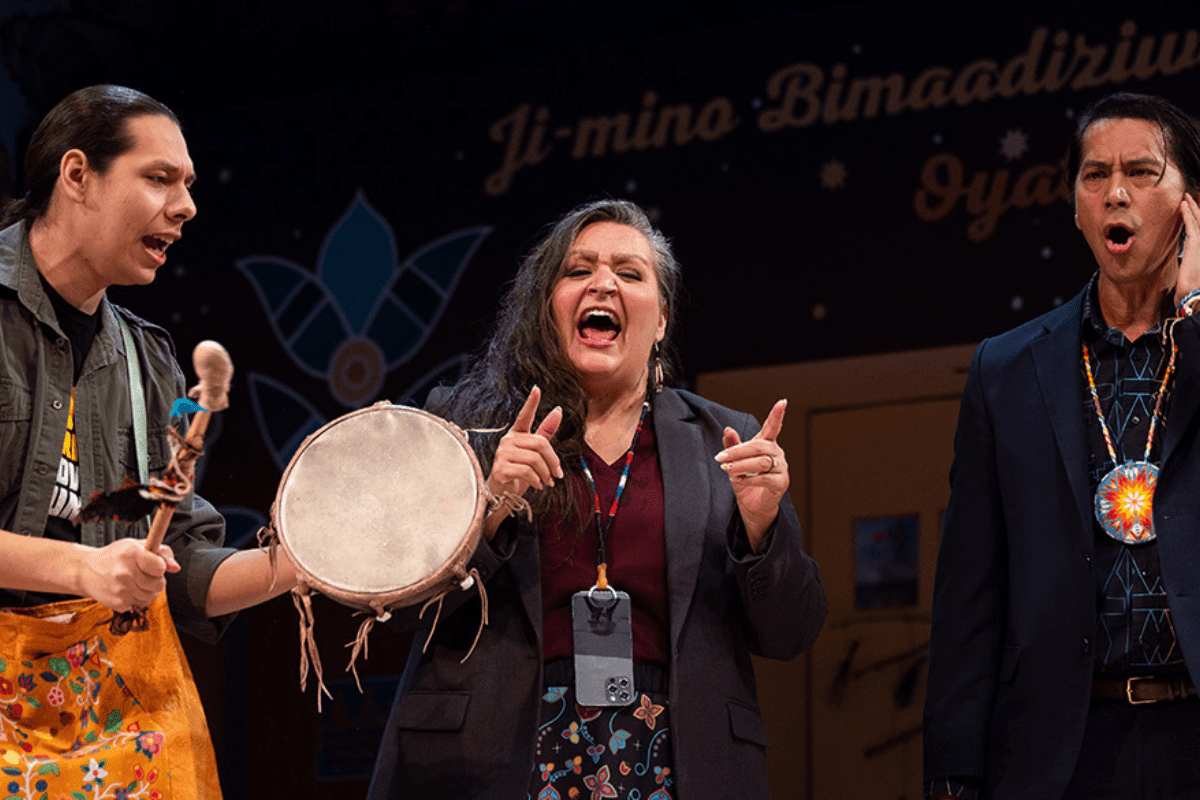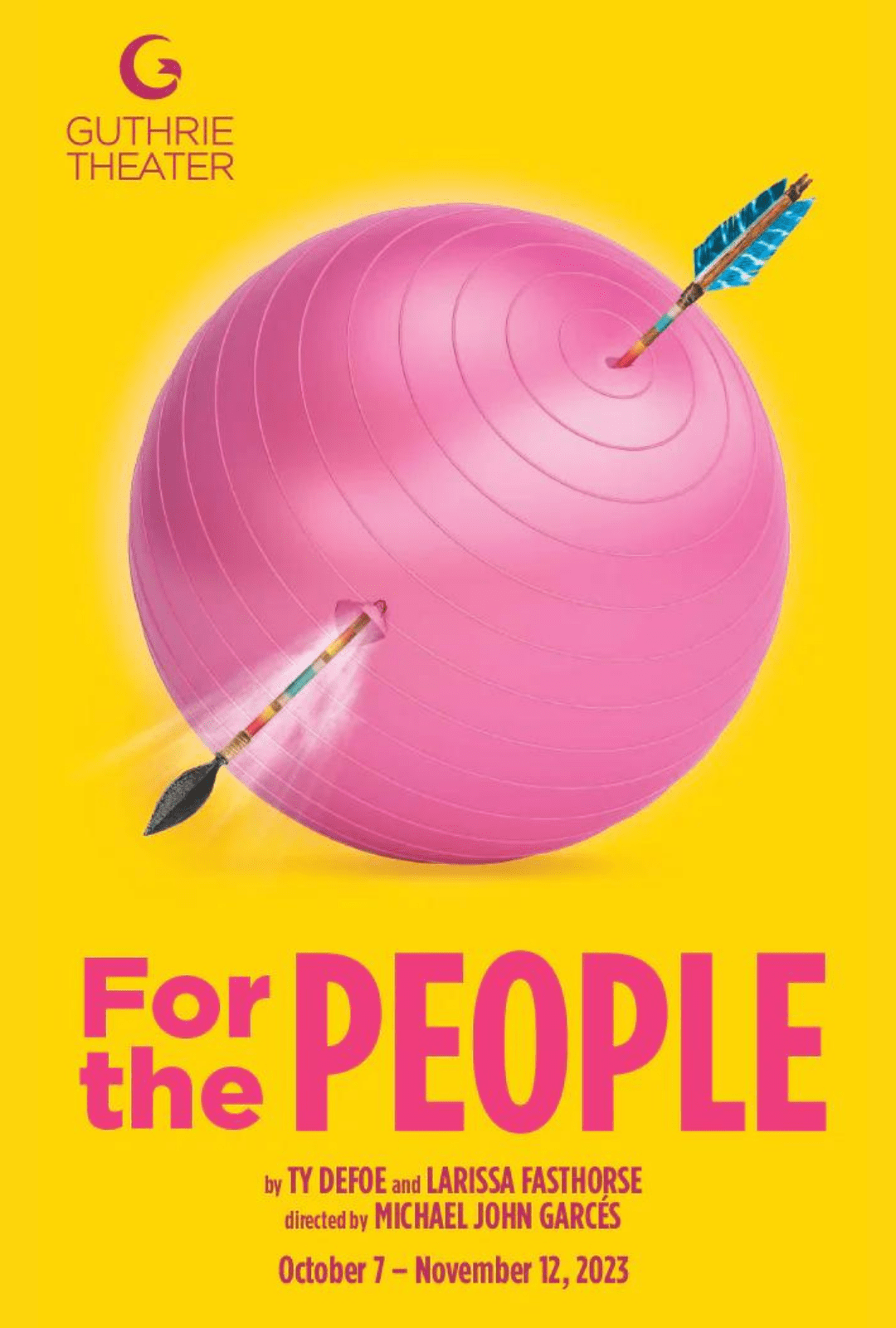A must-see comedy just debuted at Minneapolis’s Guthrie Theater that’s truly for the people. Commissioned by the arts institution with support from the Joyce Foundation, For the People was created by trailblazing playwright Larissa FastHorse (Sicangu Lakota) — who earlier this year became the first Native American woman to produce a play on Broadway — and interdisciplinary artist/activist Ty Defoe (Oneida/Ojibwe) as an ode to the Twin Cities’ expansive Indigenous community. Along the way, they collaborated with local Native leaders to shape the story in an authentic manner.
Directed by Michael John Garcés, the comedy is set on Minneapolis’s Franklin Avenue, where 20-something protagonist April Dakota aims to build a wellness center to serve the area’s large Native population. But her plans quickly unravel as she tries to convince tribal leaders and elders to fund the project. With humor at its core, For the People examines the complexities of modern Native life. The play’s impressive Indigenous ensemble — including local talents as well as notable names like Wes Studi (the only Native actor to receive an Oscar) — will have audiences laughing, crying and rethinking what it means to call someplace home.
We spoke with FastHorse about Native entertainment, her history-making career, and For the People, which runs through November 12 with special events like Indigenous pop-up markets, a BIPOC community night and more.
Why should everyone across the Twin Cities see For the People?
Because this show was made in, with and for the Twin Cities. It’s set on East Franklin Avenue, and there are a lot of references to local places and recent events. I’ve heard people leaving the previews saying, “Wow, I saw my home here.” It was made over the past seven years with people of the Twin Cities — primarily Native folks because that’s who we really wanted to highlight in this play, which is the first ever Native-written play on a Guthrie main stage.
What is it like working with such a talented Native ensemble, including Wes Studi and Sheri Foster Blake?
We’re thrilled to be able to blend these newer, younger local voices with super experienced nationally recognized voices to create this incredible ensemble. There’s just so much Native talent here in the Twin Cities, and they’ve had a lot of opportunities to hone their craft and perform lately. Kalani Queypo was a real standout on the TV series Jamestown. A lot of folks know Sheri Foster Blake from Unbreakable Kimmy Schmidt, which is just hilarious. And my cowriter, Ty, has worked with Wes Studi in the past; I had no idea he was so funny.
How has the Guthrie strived to Indigenize the experience?
Ty and I are so honored to be working with the Guthrie; this is the third play we’ve partnered with them on. Under the leadership of Joe Haj, the Guthrie is doing as much if not more than any other predominantly white institutional theater in the United States in terms of their commitment to Indigenous art. They have weekly “Indigenizing the Process” meetings with the staff. They have a full-time, paid Native American council that advises on all aspects of the theater. They have had years of workshops in the local Native community. They have incredible ticket initiatives and beautiful gatherings for the Native community at the theater.
Especially in this climate of struggling to regain audiences after the pandemic, very few theater companies are following through on these promises that, quite frankly, require more time and money because it’s changing how things are done in theater, which has always been a white Western-centered culture. Our first rehearsal was led by Dakota and Anishinaabe elders; we didn’t hear from the Guthrie creative team until an hour in, because community comes first.
They’re not afraid of saying the word “reparations” here at the Guthrie. So how are they paying reparations — as in what resources can they offer back because they’re acutely aware that they are on Native land? Marlena Myles — one of the artists who designed the mural on our set with Thomasina Topbear — is going to create another mural outside the Guthrie facing the river that will serve as a permanent land acknowledgement. The Guthrie is willing to try, make the mistake, learn from it and do better, which is the best we can ask for from our theaters.
Why is it so important for Native stories to be told in an authentic way?
The majority of the arts world has operated as an extraction industry from Native communities. They come in and take stories, ideas, characters and culture then profit from it onstage without ever being accountable to the people they’re taking from. Native stories need to be told in a way that reverses that. Everything I’m working on with Michael John Garcés and Ty Defoe is focused around uplifting the community and giving them voice. If a non-Indigenous person can also have that depth of process, I think that’s great. But Native writers are still so deeply underrepresented in American theater at less than 1%, which is why it’s important to center Native voices.
Reflecting on your career thus far, what are your proudest accomplishments?
I have always been very clear that I’m an ambitious human. When I signed with my agents 12 years ago, I said it was my goal to be the first Native American woman on Broadway. It took a while, but I got there. We hadn’t had a Native woman on Broadway, and the last Native writer we know of on Broadway — Lynn Riggs — was 80 years ago. I was fortunate to be given access very early on here in Minneapolis at the Children’s Theatre Company, and I wanted to take it as far as you can in the theater world. I’m very proud of that.
At the same time, the day after The Thanksgiving Play opened on Broadway, Michael John Garcés and I started touring South Dakota reservations with Wicoun, an entirely community-generated, -performed and -toured play. To be honest, I’m probably most proud of that, because it’s one of the hardest things I’ve ever done. People don’t often tour plays in rural reservations because the distances make it difficult, housing is a challenge and they’re food deserts. But I’m incredibly proud of that work, and we’re hoping to do more of that.
What do you hope audiences take away from For the People?
I hope audiences first and foremost have fun. We spent the past few years so separated, and theater is the only communal storytelling medium that brings us together in one space to share breath, laughter, tears and awe — all of which we have in this show. I also hope when audiences leave that they really think about the land they’re on. I hope they think about the commonalities we have as humans while also recognizing the extreme differences people experience. Native people have literally been hunted here in the state of Minnesota and continue to struggle for their government-given rights. Even though it’s very specifically about Native folks, this is truly a show for everyone. It’s about belonging, about not belonging and about trying to belong somewhere you’re not wanted. Because it’s a comedy, it lets anyone who comes know that they’re welcome here — and that this is for all of us together.






